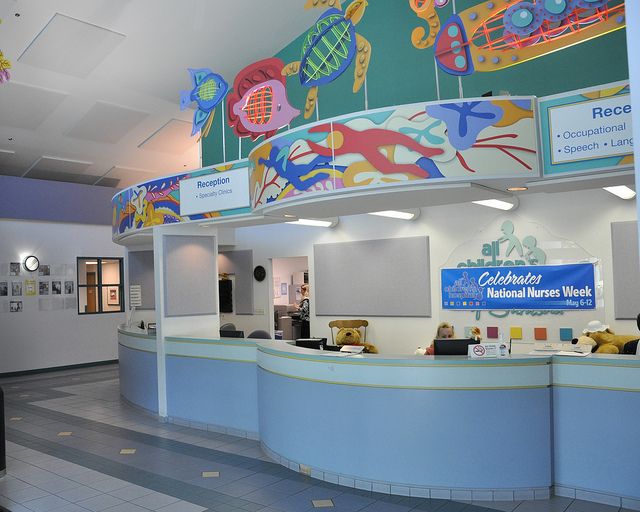
17 Jan Create a Positive First-Impression
Enabling someone to feel in control of the environment, particularly an environment that is already unfamiliar to them, provides the visitor with a sense of accomplishment and capability, rather than feeling lost and confused. This is one of the goals of Feng Shui is to assure that anyone who enters a space—whether home or office—knows what to do and where to go.
This is even more important in a hospital setting when a visitor or potential patient is already likely to carry stress or concern which can impair any subtle cues or intuitive expectations as to where they should head. Being sure that a person navigating through a medical building knows exactly where they need to go contributes enormously to their confidence in the staff as well as their own self-confidence.
Here are some ways to make this way-showing obvious, easy and friendly:
1. Position check-in desk close to the main entrance so that anyone who enters doesn’t have to wander around looking for assistance.
2. If an information desk is the initial go-to place for assistance, assure that the personnel anticipate the needs of those coming through the door—rather than making them feel like they may be interrupting a private conversation.
3. When there are specific check-in areas (procedural, surgery, x-ray, etc.), use color as the differentiator to set the various areas apart: signs, carpet in-lays, wall color, etc.
4. Interim signage will keep the way-finder assured of their upcoming destination.
5. Positioning a pleasant person or concierge (who could even be a volunteer) by the main entrance to not only welcome those coming in but to also point them in the right direction if needed underscores the medical facility’s commitment to helping anyone who comes through the door.
When someone has to circle back, re-trace their steps or in desperation finally ask for help, their frustration will color the rest of their time there. However, making it easy for them to self-navigate guarantees them a more positive experience, and therefore more positive associations with the hospital or clinic they’ve just visited.
